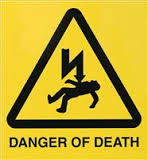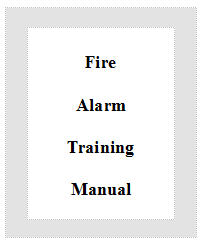Illinois Private Alarm Contractor
License Examination Test
 testing prep courses information and study material
testing prep courses information and study material
818 883-6969
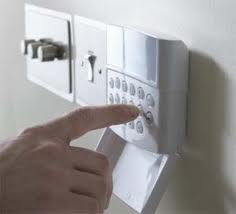
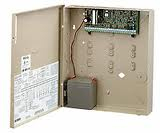


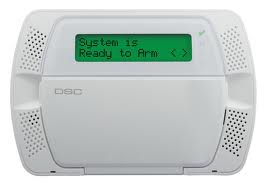
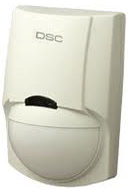
Including the new changes to the Illinois alarm licensing law!
We are thePIgroup!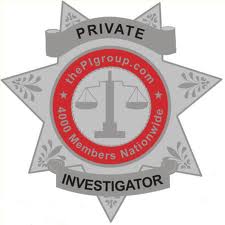 4000 members nationwide.
4000 members nationwide.
This alarm package is about 12 pounds of material!
Updated for 2024!
More than pages of burglar and fire alarm data!
pages of burglar and fire alarm data!
Updated for 2024!
More than
 pages of burglar and fire alarm data!
pages of burglar and fire alarm data! We have helped more than 400 persons to pass their state's license tests in the past year!
Illinois Private Alarm Contractor license testing details-
--75 minutes allowed to complete test
--you sit in a big room with hundreds of other test-takers
--75 questions on whichever test issued to you
--multiple versions of test ('Test D', etc)
--multiple-choice answer choices
--you must:
A) read and comprehend the entire question;
B) read through each of the answer choices;
and C) decide on the best answer choice.
--70 questions or more correct is required to pass
-- testing is twice a year, in Chicago:
every March and September.
--results by mail in two to 4 weeks, or can check by Internet
--results tell your score, Pass or Fail, and your strength/weakness areas of topic areas.
NOTE: for this test, you must know both security/burglar and fire.
818 883-6969  Call us for a few FREE sample questions!
Call us for a few FREE sample questions!
 Call us for a few FREE sample questions!
Call us for a few FREE sample questions!
License testing secret #1:
Understand that you must know the data needed to pass
every one of several different 75-question tests
as to be able to pass whichever is assigned to you
(so knowing only 100 questions is a waste of time!)
Call 818-883-6969 for the new lower price on this popular package!
lower price on this popular package!
License testing secret #2:
Most test-takers do the worst on
BUSINESS MANAGEMENT type questions.
These are the ones that many test-takers do bad on!
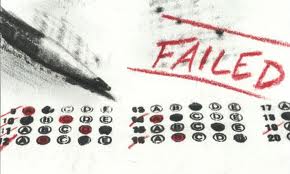
Records - Employees - Legal Requirements
Studying helps prepare you for these-- and much more!
You can request second-day delivery for much of Illinois!
Many pages of datasheets with graphics  enhance our Illinois study material!
enhance our Illinois study material!
Are you ready for the many Illinois private alarm contractor test question topics?
You can expect to find on your test:
Licensure & Practice Requirements
8-10 Questions
Qualifications and training
Business practices
Recordkeeping and reporting
Violations and penalties
Design/Install/Maintain/Service Fire Alarm Systems
31-35 Questions
Life Safety Code requirements
Installation standards
Wiring methods and materials
Grounding and overcurrent protection
Work hazards, safety and liability
Commercial fire warning systems
Fire control and sprinkler systems
Household fire warning systems
Detection and signaling systems
Emergency voice/alarm systems
Central station alarm systems
Remote station signaling systems
Communication links (POTS, DSL, RJ31X, etc.)
False alarm protection
Design/Install/Maintain/Service Security Alarm Systems
26-30 Questions
Life Safety Code requirements
Installation standards
Wiring methods and materials
Grounding and overcurrent protection
Work hazards, safety and liability
Detection and signaling devices
Commercial burglar alarm systems
Central station alarm systems
Residential burglar alarm systems
Electronic access control systems
Security and surveillance video systems
Communication links (POTS, DSL, RJ31X, etc.)
False alarm protection
Click here for a license application for
an Illinois private alarm contractor license:
www.idfpr.com/dpr/apply/forms/pd-ex.pdf
 An exciting new Illinois test training option!
An exciting new Illinois test training option!
 -by-
-by- 
Also available is
'Illinois Private Alarm Contractor license test study questions: by text'!
a series of key IL Alarm topic questions and answers can be sent to your own cell phone.
For those who order our packages by mail, this can 'warm them up' while awaiting delivery!
Not BS 'on-line' study or useless multiple-choice questions:
these are IL PD questions with guaranteed-correct answers, sent directly to your phone.
If your phone can't take texts, we can do this 'warm-up' to your e-mail instead.

Nationwide,
at least 2 persons use our 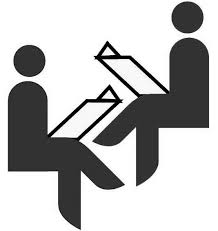 help to pass testing!
help to pass testing!
License testing secret #3
Watch out for these types of answer choices:
SIMILAR ANSWER CHOICES

Sometimes more than one answer choice
will look the same-- but there will be
a small
difference if you look close!
Studying helps prepare you for these-- and much more!
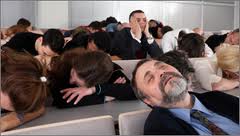 We are NOT an overpriced time-wasting seminar!
We are NOT an overpriced time-wasting seminar!
We are NOT a useless online prep! 
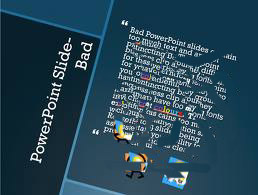 We are NOT a cheap powerpoint pdf download!
We are NOT a cheap powerpoint pdf download!
We have real PAPER study material with years of success!
818 883-6969
License testing secret #4:
Many test-takers have a tough time
with this type of answer choices:
'Choose the BEST answer'.

You might find questions where more
than one of the answer choices is correct.
But one choice is a little better than the others.
Studying helps prepare you for these-- and much more!
-HERE ARE THE SECRETS!
Tested areas, business help areas, and/or other study areas include:
Licensing law,
proximity alarms, monitoring, general provisions, administration,
classification, Kirchoff's Law, expired license, sound detection systems, grounds,
alarm contacts, office regulations, business practices, weapons laws, techniques,
smoke beams, service, open, closed, shorts, central stations, management,
National Electrical Code, CCTV, programing, PIRs, IP systems, doubling voltage,
Ohm's Law, business management, diodes, voltage, firearms, about NFPA 731,
sexual harassment, protective loops, system diagrams, circuits, OSHA, volumetric,
cross-zoning, insurance, service calls,
gap width, grounding, sirens, DC-09 Standard,
ferrite beads,
EOL resistors, parallel, AWG differences, UL, prohibited acts,
extent of protection, grounded, continuity, voltage drop, about NFPA 101, AHJs,
US employment eligibility, repair, access, smoke alarms, languages, photoelectric beams,
battery tests, symbols, false alarm reduction, consultation, installation, service, ladders,
safety, supervised loops, devices normally closed, defense, employee requirements,
wire type, eye protection, double-closed, RJ-xx differences, privacy, standards,
safety, verification, receivers, devices normally open, resistors, related laws,
prohibited acts and citations, monitoring, signal, glass breaks, serial, motion detectors,
conduct of business, legal proceedings, ladders, alarm activations, climate concerns,
digital communicators, outside bell time, shorts, wire types, wire length,
PERC, UL, elevator telephones, branch circuits, piezos, bill trays, searches,
spot-type heat detectors, extents, repair, bell time-outs, supervised loops,
openings, alarm agent registration, microwave, 1099s, contract cancellations, deposit refunds,
backup batteries, pet-friendly intrusion-detection devices, infrared, QM death, combination detectors,
CO carbon monoxide detectors, magnetic alarm contacts, motion sensors, glass-break detectors,
safe/vault extent complete, verified alarm systems, ATM/night-depository protection, parallel wiring,
series/serial wiring, plenum spaces, shunts, plenum cabling, classes of cables, branch offices,
auxiliary outputs, cable rating, employee death, ladder choices, DSL, telephone line seizure,
Central Station communication methods, Central Station licensing requirements, about NFPA 730,
the most common general false alarm causes,
false alarms from PIRs,
plunger sensors, power supplies, supervision, false alarms,
bells,
responding to alarms, audio discriminators, plunger switches, microwave sensors, monostatic sensors,
bistatic sensors, Central Station requirements to be UL listed, client education, RJ31X details,
RJ31X installation, RJ31X client notification, alarm system power supplies, ultrasonic motion detectors,
home-run wiring, changing a back-up battery without a disable code, alarm permits, service loops,
common wiring used with alarm systems, load-testing a back-up battery, conduit differences,
types of alarm keypads, alarm keypad placement, listen-in monitoring, CCTV,
CP-01 Standards, Alarm System -to- Central Station communication protocols, DTMF, Contact ID, FSK SIA,
Pulse 4/2, basic alarm troubleshooting, cable/wiring 'tips' to reduce false alarms, distant devices,
intercom installations, the 4 keypad wire colors and what each is for, magnetic switches, entry/exit delays,
Doppler, advantages of wireless systems, advantages of wired systems,
factors that affect placement of interior detection devices, factors that affect placement of perimeter detection devices,assessing a customer's alarm system needs and expectations, photoelectric sensors, dual-technology sensors,
strange things that have caused false alarms, third-party monitoring, lying on an application, POTS, VOM,
maximum down payments allowed, suing your alarm clients in court,
alarm foil window tape, annunciators, weakest point of an alarm system,
ferrite rings and beads,
Average life expectancy comparison: magnetic switches vs micro switches,
alarm pressure mats,A difference in wiring that many don't know-- fire alarm circuits vs burglar alarm circuits,
anti-tamper switches,wiring at baseboards, oral agreements vs written agreements, programmable ringer shut-off times, xyz dialers, reed switches, residential sales agreements, alarm zones, long runs of wire, l
abandoning an alarm installation plan, required disclosures,
about NFPA 731, CP-01 ordinances, cross-zone ordinances, contracts,
Digital Communication Transmitters,
UL inspection timing, and more!--
(Of course we don't list all the secrets here, or you might not call for our material!)






Our copyrighted and detailed

Illinois Private Alarm Contractor Study Material & Business Help
'Illinois Private Alarm Contractor 2024 Super Package'
INCLUDES:
1. --Call for details of Package A!
--and more!--
(Contact us for information about our detailed
Illinois Private Alarm Contractor licensing
and test preparation package.)
 Or, some choose the 'Package B' instead!
Or, some choose the 'Package B' instead!
Call for the contents of this more compact assistance.
We see it every year or two!
Over and over and over, yet another person who passes the license
test decides to offer 'test prep help' because he passed the test.
Sadly, even if he remembered every question that was on his/her test,
that doesn't cover the many other versions of the test.
Their intentions are good, but that's not enough.
 Avoid the clowns.
Avoid the clowns.
Avoid the phonies. 
Only www.thePIgroup.com has our complete 2024 IL Private Alarm Contractor
study material,
part of a one-on-one complete new business consultation package!
We have helped more than 4500 nationwide pass their
states' license tests-- more than 300 in the past year.
Nobody else has even helped 40 to pass the tests in the last year!
Simulated Testing
for the Illinois
Private Alarm Contractor
license exam

Also available is our on-line text that includes simulated practice license
test
questions
for the Illinois Private Alarm Contractor license examination test,
a simulator to a computer-testing as it advises the time limitations to answer each.
See www.thePIgroup.com/seminars.htm for more information about this option.
FlashCards
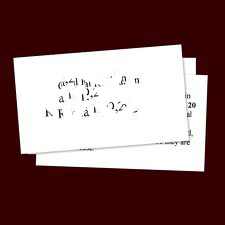
Also available are our FlashCards of vocabulary and practice license test
questions
for the Illinois Private Alarm Contractor license examination test.
Pocket-sized as to study anywhere you go,
they include instructions for studying them using the 'Leitner System'
(a proven way of increasing the retention of data from flash cards).
These are NOT generic 'nationwide' PI flashcards!
BONUS: Pass with our material,  we can make you a simple webpage FREE!
we can make you a simple webpage FREE!
(If you don't have a webpage, the public & businesses can't find you to hire you.)
From a 30-year teacher of license test questions and business help:

WORST possible study methods:
1) Seminars, and 2) studying with multiple-choice questions
(low retention percentage, too many words per actual needed knowledge)
BEST possible study method:
reading Question/Answer, Question/Answer, Question/Answer, . . .
(direct to memory, higher word priority)
Why do so many applicants fail the Illinois
Private Alarm Contractor license examination exam?
See if you can answer these state-issued practice questions:
(All questions on these examinations are multiple choice with
one correct answer; choose the BEST answer to each question.
These questions are provided for information purposes only; questions much like these
will be on the tests, but none of these questions will be repeated on the examinations.)
1. Which of these is required in the personnel file of each alarm contractor employee for at least five years after termination of the employee?
A. The original of the employee’s certificate of completion of basic or refresher training
B. A copy of the employee’s active Firearm Owner’s Identification Card (FOID) if the employee was ever armed while on duty
C. A copy of each report of discharge of any armed employee’s weapon while on duty as filed within 15 days after the incident
D. The original of the employee’s application for a permanent registered employee card
2. Which of these is NOT among the reasons an alarm contractor may be subject to disciplinary action for violations of the licensure act?
A. Failure to file a tax return
B. Nonpayment of child support
C. Defaulting on an educational loan
D. Suspension of an Illinois driver’s license
3. Which of these sets criteria for determining where fire alarm systems are needed in most buildings?
A. NFPA 70
B. NFPA 72
C. NFPA 101
D. ASME/ANSI A17.1
4. Which of these organizations conducts tests and writes specifications for proper installation and use of alarm system components?
A. Underwriters Laboratories (UL)
B. International Codes Council (I-Codes)
C. National Fire and Protection Association (NFPA)
D. Occupational Health and Safety Administration (OSHA)
5. Which statement is true about household fire warning systems?
A. Most multiple station detectors are designed to sound alarms in all units within a system whenever an alarm condition exists for any detector in the system.
B. The burglar alarm signal in combined systems should take precedence over all other components of a household system.
C. Household systems are redundant for condominium units in which automatic fire detection and alarm systems are installed in common areas.
D. Local protective signaling systems in household use are appropriate only when the occupant is willing to contract with a central station for service.
6. Which statement most accurately describes NFPA standards for spacing and coverage of a protected area with spot-type heat detectors?
A. All points on the ceiling must have a detector within 0.4 times the detector’s listed spacing for each location within a protected area.
B. The coverage of a detector is a circle whose radius is 0.7 times the linear spacing of the detectors to be installed in the protected area.
C. The coverage of a detector is a rectangle whose dimensions are 0.7 times the longest dimension of the protected area.
D. Each alarm contractor is responsible for determining the spacing factor for the detectors to be installed in a protected area.
7. Digital communication transmitters for central station fire service
A. may use a ground start telephone line.
B. must use at least two separate unlisted phone numbers.
C. must be installed with at least two separate means of transmission at the protected premises.
D. must send a test signal to the monitoring station to confirm line integrity at least once every week.
8. Which of these provides the most comprehensive installation standards for security alarm systems?
A. NFPA 72
B. NFPA 101
C. NFPA 730
D. NFPA 731
9. Which of these most accurately describes proper installation of wiring in electronic premises security systems?
A. All terminals must be color coded to indicate the proper connections.
B. The service loop for metallic wire at control panels must be at least 6 inches.
C. A minimum 10 inch service loop shall be at control panels and enclosures used for wiring terminations.
D. Wiring for low voltage electronic premises security systems may never be within two inches of any light or power circuits.
10. Which statement most accurately describes the UL ratings of extent of protection?
A. Extent 1 is required for maximum discounts on most insurance policies.
B. Extent 2 requires protection of all openings, ceilings, floors and walls.
C. Extent 3 requires full building motion detection and contacts on all moveable openings.
D. Extent 4 requires contacts on all accessible doors and either motion detection in selected areas or contacts on at least two interior doors.
11. Which statement most accurately describes UL-certificated residential burglar alarm systems?
A. The alarm company must inspect the system at least once a year.
B. All maintenance and repairs must be provided without additional cost to the property owner.
C. Any contract for UL-certificated residential burglar alarm service must include expanded protection.
D. UL-Certificated residential service is required whenever an insurer requires a property owner to have a burglar alarm system.
12. Which of these is the most likely benefit from using video surveillance in retail establishments?
A. Reducing vandalism
B. Controlling shoplifting
C. Managing access control
D. Limiting workplace violence

Got 10 minutes? Call 818-883-6969 for the most
valuable test phone conversation you will ever have!
License testing secret #1:
Understand that you must know the data needed to pass
every one of several different 75-question tests
as to be able to pass whichever is assigned to you
(so knowing only 100 questions is a waste of time!)
Call 818-883-6969 for the new lower price on this popular package!
lower price on this popular package!
License testing secret #2:
Most test-takers do the worst on
BUSINESS MANAGEMENT type questions.
These are the ones that many test-takers do bad on!

Records - Employees - Legal Requirements
Studying helps prepare you for these-- and much more!
License testing secret #2:
Most test-takers do the worst on
BUSINESS MANAGEMENT type questions.
These are the ones that many test-takers do bad on!

Records - Employees - Legal Requirements
Studying helps prepare you for these-- and much more!
You can request second-day delivery for much of Illinois!
Many pages of datasheets with graphics  enhance our Illinois study material!
enhance our Illinois study material!
Are you ready for the many Illinois private alarm contractor test question topics?
You can expect to find on your test:
Licensure & Practice Requirements
8-10 Questions
Qualifications and training
Business practices
Recordkeeping and reporting
Violations and penalties
Design/Install/Maintain/Service Fire Alarm Systems
31-35 Questions
Life Safety Code requirements
Installation standards
Wiring methods and materials
Grounding and overcurrent protection
Work hazards, safety and liability
Commercial fire warning systems
Fire control and sprinkler systems
Household fire warning systems
Detection and signaling systems
Emergency voice/alarm systems
Central station alarm systems
Remote station signaling systems
Communication links (POTS, DSL, RJ31X, etc.)
False alarm protection
Design/Install/Maintain/Service Security Alarm Systems
26-30 Questions
Life Safety Code requirements
Installation standards
Wiring methods and materials
Grounding and overcurrent protection
Work hazards, safety and liability
Detection and signaling devices
Commercial burglar alarm systems
Central station alarm systems
Residential burglar alarm systems
Electronic access control systems
Security and surveillance video systems
Communication links (POTS, DSL, RJ31X, etc.)
False alarm protection
Click here for a license application for
an Illinois private alarm contractor license:
www.idfpr.com/dpr/apply/forms/pd-ex.pdf
 An exciting new Illinois test training option!
An exciting new Illinois test training option!
 -by-
-by- 
Also available is
'Illinois Private Alarm Contractor license test study questions: by text'!
a series of key IL Alarm topic questions and answers can be sent to your own cell phone.
For those who order our packages by mail, this can 'warm them up' while awaiting delivery!
Not BS 'on-line' study or useless multiple-choice questions:
these are IL PD questions with guaranteed-correct answers, sent directly to your phone.
If your phone can't take texts, we can do this 'warm-up' to your e-mail instead.

Nationwide,
at least 2 persons use our  help to pass testing!
help to pass testing!
License testing secret #3
Watch out for these types of answer choices:
SIMILAR ANSWER CHOICES

Sometimes more than one answer choice
will look the same-- but there will be
a small
difference if you look close!
Studying helps prepare you for these-- and much more!
 We are NOT an overpriced time-wasting seminar!
We are NOT an overpriced time-wasting seminar!
We are NOT a useless online prep! 
 We are NOT a cheap powerpoint pdf download!
We are NOT a cheap powerpoint pdf download!
We have real PAPER study material with years of success!
818 883-6969
License testing secret #4:
Many test-takers have a tough time
with this type of answer choices:
'Choose the BEST answer'.

You might find questions where more
than one of the answer choices is correct.
But one choice is a little better than the others.
Studying helps prepare you for these-- and much more!
-HERE ARE THE SECRETS!
Tested areas, business help areas, and/or other study areas include:
Licensing law,
proximity alarms, monitoring, general provisions, administration,
classification, Kirchoff's Law, expired license, sound detection systems, grounds,
alarm contacts, office regulations, business practices, weapons laws, techniques,
smoke beams, service, open, closed, shorts, central stations, management,
National Electrical Code, CCTV, programing, PIRs, IP systems, doubling voltage,
Ohm's Law, business management, diodes, voltage, firearms, about NFPA 731,
sexual harassment, protective loops, system diagrams, circuits, OSHA, volumetric,
cross-zoning, insurance, service calls,
gap width, grounding, sirens, DC-09 Standard,
ferrite beads,
EOL resistors, parallel, AWG differences, UL, prohibited acts,
extent of protection, grounded, continuity, voltage drop, about NFPA 101, AHJs,
US employment eligibility, repair, access, smoke alarms, languages, photoelectric beams,
battery tests, symbols, false alarm reduction, consultation, installation, service, ladders,
safety, supervised loops, devices normally closed, defense, employee requirements,
wire type, eye protection, double-closed, RJ-xx differences, privacy, standards,
safety, verification, receivers, devices normally open, resistors, related laws,
prohibited acts and citations, monitoring, signal, glass breaks, serial, motion detectors,
conduct of business, legal proceedings, ladders, alarm activations, climate concerns,
digital communicators, outside bell time, shorts, wire types, wire length,
PERC, UL, elevator telephones, branch circuits, piezos, bill trays, searches,
spot-type heat detectors, extents, repair, bell time-outs, supervised loops,
openings, alarm agent registration, microwave, 1099s, contract cancellations, deposit refunds,
backup batteries, pet-friendly intrusion-detection devices, infrared, QM death, combination detectors,
CO carbon monoxide detectors, magnetic alarm contacts, motion sensors, glass-break detectors,
safe/vault extent complete, verified alarm systems, ATM/night-depository protection, parallel wiring,
series/serial wiring, plenum spaces, shunts, plenum cabling, classes of cables, branch offices,
auxiliary outputs, cable rating, employee death, ladder choices, DSL, telephone line seizure,
Central Station communication methods, Central Station licensing requirements, about NFPA 730,
the most common general false alarm causes,
false alarms from PIRs,
plunger sensors, power supplies, supervision, false alarms,
bells,
responding to alarms, audio discriminators, plunger switches, microwave sensors, monostatic sensors,
bistatic sensors, Central Station requirements to be UL listed, client education, RJ31X details,
RJ31X installation, RJ31X client notification, alarm system power supplies, ultrasonic motion detectors,
home-run wiring, changing a back-up battery without a disable code, alarm permits, service loops,
common wiring used with alarm systems, load-testing a back-up battery, conduit differences,
types of alarm keypads, alarm keypad placement, listen-in monitoring, CCTV,
CP-01 Standards, Alarm System -to- Central Station communication protocols, DTMF, Contact ID, FSK SIA,
Pulse 4/2, basic alarm troubleshooting, cable/wiring 'tips' to reduce false alarms, distant devices,
intercom installations, the 4 keypad wire colors and what each is for, magnetic switches, entry/exit delays,
Doppler, advantages of wireless systems, advantages of wired systems,
factors that affect placement of interior detection devices, factors that affect placement of perimeter detection devices,assessing a customer's alarm system needs and expectations, photoelectric sensors, dual-technology sensors,
strange things that have caused false alarms, third-party monitoring, lying on an application, POTS, VOM,
maximum down payments allowed, suing your alarm clients in court,
alarm foil window tape, annunciators, weakest point of an alarm system,
ferrite rings and beads,
Average life expectancy comparison: magnetic switches vs micro switches,
alarm pressure mats,A difference in wiring that many don't know-- fire alarm circuits vs burglar alarm circuits,
anti-tamper switches,wiring at baseboards, oral agreements vs written agreements, programmable ringer shut-off times, xyz dialers, reed switches, residential sales agreements, alarm zones, long runs of wire, l
abandoning an alarm installation plan, required disclosures,
about NFPA 731, CP-01 ordinances, cross-zone ordinances, contracts,
Digital Communication Transmitters,
UL inspection timing, and more!--
(Of course we don't list all the secrets here, or you might not call for our material!)






Our copyrighted and detailed

Illinois Private Alarm Contractor Study Material & Business Help
'Illinois Private Alarm Contractor 2024 Super Package'
INCLUDES:
1. --Call for details of Package A!
--and more!--
(Contact us for information about our detailed
Illinois Private Alarm Contractor licensing
and test preparation package.)
 Or, some choose the 'Package B' instead!
Or, some choose the 'Package B' instead!
Call for the contents of this more compact assistance.
We see it every year or two!
Over and over and over, yet another person who passes the license
test decides to offer 'test prep help' because he passed the test.
Sadly, even if he remembered every question that was on his/her test,
that doesn't cover the many other versions of the test.
Their intentions are good, but that's not enough.
 Avoid the clowns.
Avoid the clowns.
Avoid the phonies. 
Only www.thePIgroup.com has our complete 2024 IL Private Alarm Contractor
study material,
part of a one-on-one complete new business consultation package!
We have helped more than 4500 nationwide pass their
states' license tests-- more than 300 in the past year.
Nobody else has even helped 40 to pass the tests in the last year!
Simulated Testing
for the Illinois
Private Alarm Contractor
license exam

Also available is our on-line text that includes simulated practice license
test
questions
for the Illinois Private Alarm Contractor license examination test,
a simulator to a computer-testing as it advises the time limitations to answer each.
See www.thePIgroup.com/seminars.htm for more information about this option.
FlashCards

Also available are our FlashCards of vocabulary and practice license test
questions
for the Illinois Private Alarm Contractor license examination test.
Pocket-sized as to study anywhere you go,
they include instructions for studying them using the 'Leitner System'
(a proven way of increasing the retention of data from flash cards).
These are NOT generic 'nationwide' PI flashcards!
BONUS: Pass with our material,  we can make you a simple webpage FREE!
we can make you a simple webpage FREE!
(If you don't have a webpage, the public & businesses can't find you to hire you.)
From a 30-year teacher of license test questions and business help:

1) Seminars, and 2) studying with multiple-choice questions
(low retention percentage, too many words per actual needed knowledge)
BEST possible study method:
reading Question/Answer, Question/Answer, Question/Answer, . . .
(direct to memory, higher word priority)
Why do so many applicants fail the Illinois
Private Alarm Contractor license examination exam?
See if you can answer these state-issued practice questions:
(All questions on these examinations are multiple choice with
one correct answer; choose the BEST answer to each question.
These questions are provided for information purposes only; questions much like these
will be on the tests, but none of these questions will be repeated on the examinations.)
1. Which of these is required in the personnel file of each alarm contractor employee for at least five years after termination of the employee?
A. The original of the employee’s certificate of completion of basic or refresher training
B. A copy of the employee’s active Firearm Owner’s Identification Card (FOID) if the employee was ever armed while on duty
C. A copy of each report of discharge of any armed employee’s weapon while on duty as filed within 15 days after the incident
D. The original of the employee’s application for a permanent registered employee card
2. Which of these is NOT among the reasons an alarm contractor may be subject to disciplinary action for violations of the licensure act?
A. Failure to file a tax return
B. Nonpayment of child support
C. Defaulting on an educational loan
D. Suspension of an Illinois driver’s license
3. Which of these sets criteria for determining where fire alarm systems are needed in most buildings?
A. NFPA 70
B. NFPA 72
C. NFPA 101
D. ASME/ANSI A17.1
4. Which of these organizations conducts tests and writes specifications for proper installation and use of alarm system components?
A. Underwriters Laboratories (UL)
B. International Codes Council (I-Codes)
C. National Fire and Protection Association (NFPA)
D. Occupational Health and Safety Administration (OSHA)
5. Which statement is true about household fire warning systems?
A. Most multiple station detectors are designed to sound alarms in all units within a system whenever an alarm condition exists for any detector in the system.
B. The burglar alarm signal in combined systems should take precedence over all other components of a household system.
C. Household systems are redundant for condominium units in which automatic fire detection and alarm systems are installed in common areas.
D. Local protective signaling systems in household use are appropriate only when the occupant is willing to contract with a central station for service.
6. Which statement most accurately describes NFPA standards for spacing and coverage of a protected area with spot-type heat detectors?
A. All points on the ceiling must have a detector within 0.4 times the detector’s listed spacing for each location within a protected area.
B. The coverage of a detector is a circle whose radius is 0.7 times the linear spacing of the detectors to be installed in the protected area.
C. The coverage of a detector is a rectangle whose dimensions are 0.7 times the longest dimension of the protected area.
D. Each alarm contractor is responsible for determining the spacing factor for the detectors to be installed in a protected area.
7. Digital communication transmitters for central station fire service
A. may use a ground start telephone line.
B. must use at least two separate unlisted phone numbers.
C. must be installed with at least two separate means of transmission at the protected premises.
D. must send a test signal to the monitoring station to confirm line integrity at least once every week.
8. Which of these provides the most comprehensive installation standards for security alarm systems?
A. NFPA 72
B. NFPA 101
C. NFPA 730
D. NFPA 731
9. Which of these most accurately describes proper installation of wiring in electronic premises security systems?
A. All terminals must be color coded to indicate the proper connections.
B. The service loop for metallic wire at control panels must be at least 6 inches.
C. A minimum 10 inch service loop shall be at control panels and enclosures used for wiring terminations.
D. Wiring for low voltage electronic premises security systems may never be within two inches of any light or power circuits.
10. Which statement most accurately describes the UL ratings of extent of protection?
A. Extent 1 is required for maximum discounts on most insurance policies.
B. Extent 2 requires protection of all openings, ceilings, floors and walls.
C. Extent 3 requires full building motion detection and contacts on all moveable openings.
D. Extent 4 requires contacts on all accessible doors and either motion detection in selected areas or contacts on at least two interior doors.
11. Which statement most accurately describes UL-certificated residential burglar alarm systems?
A. The alarm company must inspect the system at least once a year.
B. All maintenance and repairs must be provided without additional cost to the property owner.
C. Any contract for UL-certificated residential burglar alarm service must include expanded protection.
D. UL-Certificated residential service is required whenever an insurer requires a property owner to have a burglar alarm system.
12. Which of these is the most likely benefit from using video surveillance in retail establishments?
A. Reducing vandalism
B. Controlling shoplifting
C. Managing access control
D. Limiting workplace violence

Got 10 minutes? Call 818-883-6969 for the most
valuable test phone conversation you will ever have!





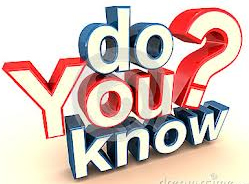
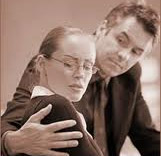
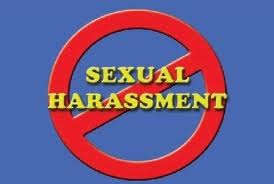
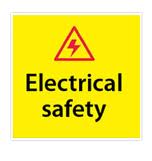 More electrical safety datasheets
More electrical safety datasheets 